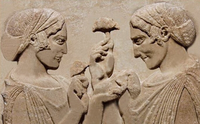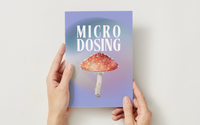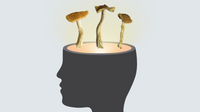Recent posts
-

-
 Amanita Muscaria Microdosing Guide: Safe Dosage, Benefits & MoreBy Psyched WellnessFebruary 17, 2025
Amanita Muscaria Microdosing Guide: Safe Dosage, Benefits & MoreBy Psyched WellnessFebruary 17, 2025 -
 Microdosing Shrooms: How Psilocybin Mushrooms Enhance Mental HealthBy Psyched WellnessJanuary 27, 2025
Microdosing Shrooms: How Psilocybin Mushrooms Enhance Mental HealthBy Psyched WellnessJanuary 27, 2025
Featured articles
Increasing Access to Psychedelic Therapy

Psychedelics have great potential for use in medicine, but regulatory barriers prevent their widespread application. Fortunately, some alternative products—such as the Amanita Muscaria mushroom—are now being studied and scaled to the masses.
A long history supports the use of psychedelics and psychoactives as medications. More than 5,000 years ago, for example, some tribes in Central and South America used the fly agaric mushroom (Amanita muscaria) for a range of medicinal purposes.
“Psychedelic plants and fungi have been used in indigenous medicinal traditions for millennia,” noted a 2019 article in the Journal of Psychoactive Drugs. Although psychedelic-assisted treatments continue to be hampered by regulations, a handful of studies have shown them to be extremely effective.
This general category of medicines covers a wide range. As described by Massachusetts General Hospital physician Peter Grinspoon, “Psychedelic drugs are a loosely grouped class of drugs that are able to induce altered thoughts and sensory perceptions.” Traditionally, these medications come from nature through plants or mushrooms, but some can also be chemically synthesized.
Today, no psychedelic drugs are “approved anywhere in the world as medicines, but plant products are legal in Latin American countries,” says David Nutt, the Edmond J. Safra Professor of Neuropsychopharmacology and director of the neuropsychopharmacology unit in the division of brain sciences at Imperial College London. Despite that lack of approval, these medicines promise many potential benefits. Nutt says that psychedelic medicines “could revolutionize treatment of many psychiatric and some neurological disorders, for example cluster headaches.”
The key obstacle in making most of these medicines available comes from a Schedule I categorization. According to the U.S. Drug Enforcement Agency, Schedule I substances “are defined as drugs with no currently accepted medical use and a high potential for abuse.” As a result many people suffer from symptoms that could be effectively treated.
Nonetheless, extracts from Amanita muscaria such as Calm, which is classified as a dietary supplement, can be sold in the United States and other countries at an affordable price. In addition, a growing body of research reveals the medical value of a range of psychedelic drugs.
A growing list of benefits
In a recent article in the Journal of Psychopharmacology, Nutt and his colleagues stated: “Despite an increasing body of research highlighting their efficacy to treat a broad range of medical conditions, psychedelic drugs remain a controversial issue among the public and politicians, tainted by previous stigmatization and perceptions of risk and danger.”
After a wide study of the scientific literature on psychedelic drugs, Nutt and his colleagues concluded: “Our review shows that medical risks are often minimal, and that many - albeit not all - of the persistent negative perceptions of psychological risks are unsupported by the currently available scientific evidence, with the majority of reported adverse effects not being observed in a regulated and/or medical context.”
Instead of adverse effects, research reveals many beneficial effects of psychedelic drugs.
For example, the chemicals produced by Amanita muscaria mushrooms offer many applications in healthcare. Scientists from the University of Toronto showed that muscimol (one of the principal psychoactive constituents of Amanita muscaria) increases REM sleep in rats. Plus, work at The Ohio State University revealed that muscimol can reduce anxiety in rodents.
In 2021, a team of scientists from John Hopkins University showed that psilocybin (a hallucinogenic compound found in over 200 species of fungi) provided rapid improvement in patients with major depressive disorder. In addition, Nutt and his colleagues found that psilocybin surpassed some effects of an existing treatment for depression.
Other psychedelic drugs and applications are also being studied. As one example, Jennifer Mitchell of the department of neurology at the University of California San Francisco and her colleagues studied the impact of 3,4-methylenedioxymethamphetamine (MDMA) on patients with post-traumatic stress disorder (PTSD). The scientists found that “MDMA-assisted therapy is highly efficacious in individuals with severe PTSD, and treatment is safe and well-tolerated, even in those with comorbidities.”
Breaking down the barriers
When asked how to make psychedelic drugs available as medicines, Nutt says, “Get the World Health Organization to agree that psychedelic drugs have medical value and remove them from Schedule I.”
In the meantime, we could divert our focus to psychedelic compounds from other sources, such as the Amanita muscaria mushroom. Calm, for example, will not require a prescription and can be accessed at a much lower cost than other psychedelic products. This means that more people who need treatment for health-related issues will have access to it—regardless of their economic status.




